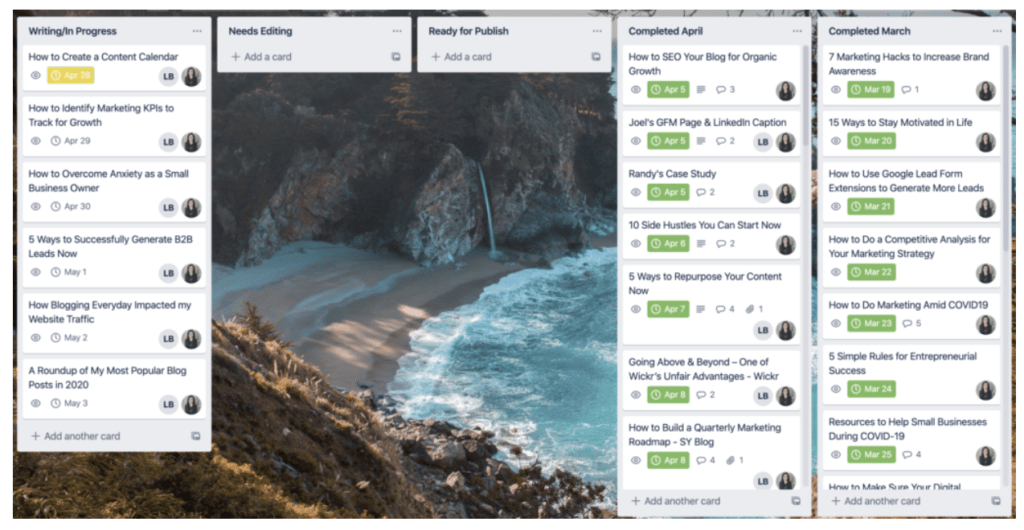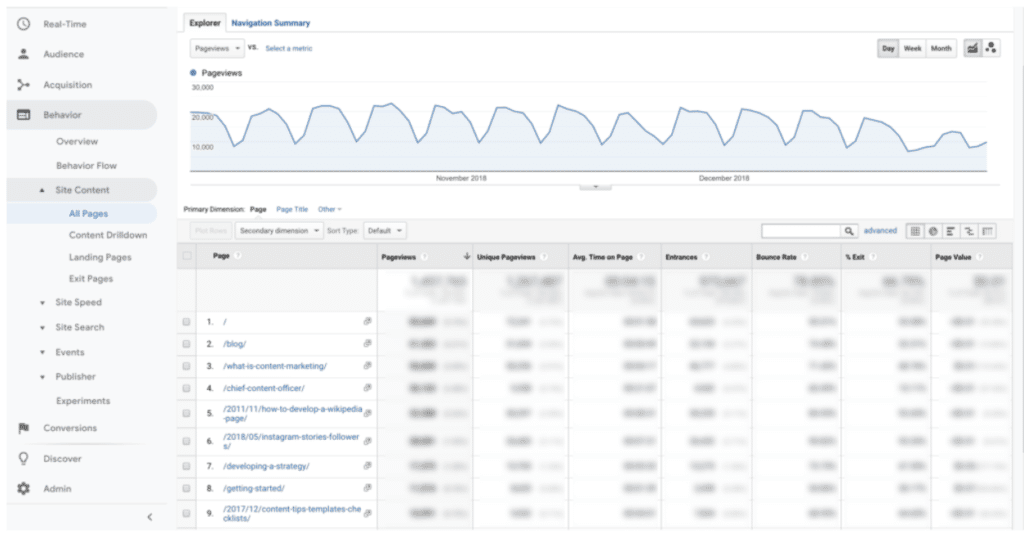Blogging takes time and effort. Sometimes it can be easy to just let it fall to the wayside as other business priorities become more of a focus. However, I can’t stress enough how important it is to maintain a regular cadence of publishing blog posts. There are a ton of different benefits that come with blogging, namely the ability to generate high-quality leads.
Check out the following stats to get an overview of why blogging matters:
- As of March 2021, there are almost 600 million blogs on the internet.
- There are 31.7 million bloggers in the US alone.
- Bloggers worldwide publish 7.5 million posts a day.
- 60% of internet users say they regularly read blogs.
- On average, US bloggers make $33,188 a year.
- Most readers find blogs via search engines.
- On average, readers spend just 37 seconds reading a blog post.
- In 2020, 6% of US adults got their COVID-19 news from blogs.
In today’s blog, I’ll walk through five simple ways that you position yourself to be able to blog consistently — ultimately, generating more leads that can be nurtured into sales for your business.
Why every business should blog
I’ve told this story plenty of times, but for those who are just finding my blog for the first time, here it is again: At the start of this year, I decided to take blogging a bit more seriously. I wanted to regularly publish new blog posts every week and use my blog as an outlet for the experiences I encountered.
I wanted to help individuals who were wanting to venture into the realm of entrepreneurship and also the executives who were needing to find ways they could develop a solid digital marketing plan that would foster growth initiatives.
The great thing about blogging is that you have a creative outlet to provide valuable content around your expertise and really push to create a meaningful connection with your target audience.
1. Create a blogging schedule
Of all the blogging calendars I’ve seen and implemented myself, the ones that take on the approach of “less is more” have always been the best. What I mean by that is they are easier to follow, understand, and add to or modify.
So instead of giving a ton of different options, I’m going to walk you through exactly what’s worked well for me and hopefully inspire you to do the same for yourself.
For starters, what works well is collaboration via a Google Sheet. From there, you can then move into implementation (e.g. drafting, research, assigning, etc.) in an actual project management tool itself. Here’s the template I love using to help me plan by SmartSheet:

Once the content is planned out, I then put it all into an actionable format where everyone involved in the content production process is easily notified like this:

2. Nail down your goals
Establishing your blogging goals will also help you understand how much content you need to be pushing out. This is key to making sure that the rest of your team is focused on the results that your content efforts will bring in over the actual implementation.
In other words, it is important to keep the bigger picture in mind while executing to keep the “why” top of mind vs viewing it as a task that needs to be checked off every week or month. Here is an example to consider:
Business Goals:
- Increase revenue
- Build brand awareness
- Generate high-quality leads
To tie into these business objectives, here are content goals you can consider:
- Increase website traffic
- Gain more blog subscribers
- Nurture blog subscribers into qualified sales leads
- Close leads into sales
In fact, the most cited blogging goals are:
- 75% want to generate quality leads
- 86% want to build brand awareness
- 79% intend to educate their audience
- 75% expect their content to build credibility and trust
3. Know who you are writing for
This may be an obvious one, but you’d be surprised by how many companies are still not mapping out their buyer personas, the buyer journey, and working cohesively with sales towards a collaborative objective. The key to knowing what type of content will drive results for your business is to make sure you understand exactly what your target audience is looking for. To be more specific:
- What are their pain points?
- What do they want to learn more about to ensure success for their own company?
- Where do they go online to find and consume content?
- How will you create content to serve their needs at every phase of the funnel?

4. Promote your content
Organic reach is dropping ever lower, particularly on social media, and Facebook, especially. It used to be that you could publish your content and all your fans would see it. But reports note that only about 10% of your Facebook followers will see your posts, so even if you have a ton of fans, they’re going to miss some of your content.
Unfortunately, social media has become a pay-to-play world for bloggers. But think of this as a good thing: not every blogger is willing to shell out money for ads, which can help you cut through the competition. Plus, you can use paid advertising to target your ads and reach people beyond your existing fanbase.
And don’t just stop with Facebook ads. Twitter, LinkedIn, and Instagram, make sure you are aware of ‘where’ your target audience is online so you can ensure you have a presence there with your content as well.
Also check out: 15 Places You Should Be Promoting Your Blog
5. Repurpose and revive
In Google Analytics, you can easily see which of your blog posts are the most popular by going to Behavior > Site Content > All Pages.

From there, you will be able to see which blog posts have received the best engagement and then do the following:
- Sort the blog topics by similarity
- Copy and paste the content into a Word Doc or Gdoc
- Begin editing the content for a smoother transition
- Get the content designed into a workable template
- Package it up
- Publish
When you publish, you’ll have two options: you can have a landing page that gates the content (i.e. an individual must fill out a form in order to access the content) or publish the content openly so that anyone can access it so long as they have the URL.
After you make this decision, the next step is to then promote the content through paid avenues and organic channels (e.g. Twitter, FB, LinkedIn, etc.) With the paid avenues, you’ll want to look at “where” your target demographic is the most active and the top referral sites. Once you do this, I’d recommend starting off with a budget of around $200+ to drive traffic back to your eBook. Then track and measure the success of the eBook based on:
- Organic traffic
- Paid traffic
- Time-on-site (if un-gated)
- New subscribers to your blog
- New leads collected (if gated)
Wrapping it up
Pushing to get into a normal cadence of publishing new blog posts will take time. However, the more you keep it going, the more you’ll start seeing positive results such as generating high-quality leads and sales. Every single blog post should be leveraged as a way to position your expertise, participating in relevant conversations happening among your target audience, and being forthcoming with the problem you solve.





